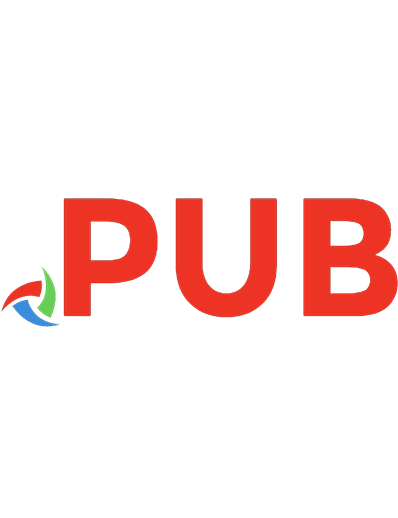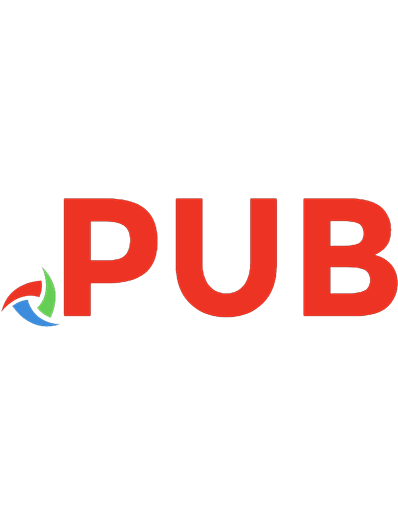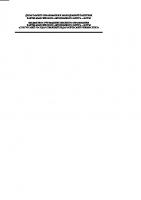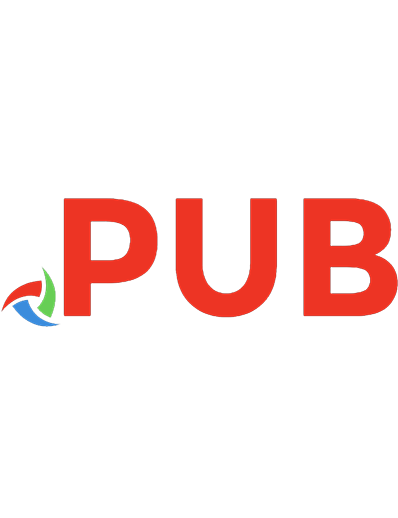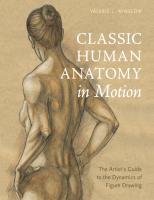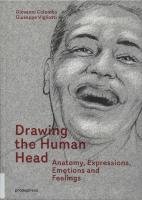Drawing the human head - anatomy, expressions, emotions and feelings. 9788416851027, 8416851026
*Searchable PDF. Missing a few blank pages, catalog information, back cover, and the following chapters: "Introduct
885 216 110MB
English Pages 0 [162] Year 2017
Polecaj historie
Citation preview
Giovanni Colombo Giuseppe Vigliotti
rp
.„..114","*•** 0.?".• 1.;
.„.17,74 ,•\
•
Draw th Head Anatomy, Expressions, Emotions and Feelings promopress
GIOVANNI COLOMBO was born in Como, Italy, in 1961. After attending a lyceum for the arts, he enrolled in the Accademia di Belle Arti di Brera in Milan to study painting. In the early 1980s, he attended the studio of A. Tenchio to deepen his knowledge of engraving, where he met and became friends with many other artists and started working in illustration in addition to painting. In 1982 he began showing his artwork, in both group and individual shows, and in 1988 he started to teach painting at the "Fausto Melotti" State Art School in Cantu, Italy - where he still works today. He wrote Percezione & Disegno: dalla visione alla rappresentazione (Perception & Drawing: From Vision to Representation; Ikon, Milan, 1998). He has published several limited edition booklets and engravings. Today he lives and works in Como. GIUSEPPE VIGLIOTTI was born in Estavayer Le Lac, Switzerland, in 1965 and currently teaches painting. In 1983 he received his diploma from a fine arts secondary school, and in 1986 his work was shown in numerous exhibitions, both group and individual. Since 1987 he's worked as a freelance illustrator and graphic designer for numerous publishers. In 1988 received his degree in painting at the Accademia di Belle Arti di Brera in Milan. From 2007 to 2010 he worked in art publishing, with specific experience relating to artists' books and the use of graphic design software, editorial layout and website creation. His current artistic focus is on video-installations, multimedia techniques and computer graphics. Today he lives and works in Como.
Giovanni Colombo Giuseppe Vigliotti
Drawing the Human Head Anatomy, Expressions, Emotions and Feelings
4
4
ti.401""
promopress
TABLE OF CONTENTS
INTRODUCTION
6
1. EMOTIONAL EXPRESSION IN ART Charles Le Brun
8 14
2. EXPRESSIONS AND PSYCHOLOGY
18
3. THE ANATOMY AND PHYSIOGNOMY OF THE HEAD The skull: front and side views Facial muscles, front and side views (superficial) Facial muscles, side view (deep) The male face: front and side views The female face: front and side views
22 24 26 28 30 32
4. EXERCISES Drawing facial details Expressive sketches Drawing the head Drawing expressions Drawing gazes
34 36 44 47 49 56
5. CLASSIFYING EMOTIONS Ecstasy Joy/Laughter Laughter/Smiling Admiration/Adoration Affection Rage/Anger Attention/Awaiting Attention/Alert Sadness/Melancholy Sadness/Crying Anguish/Pain Hate Disgust Boredom Distraction Surprise/Amazement Worry/Anxiety Fear/Terror
60 62 64 66 68 70 72 76 78 80 82 84 86 88 90 92 94 96 98
188
6. EXPRESSIONS WHICH REFLECT ATTITUDES
100 102 104 106 108 110 112 114 116 118 120 123 124 126 128 130 132 134 136 138 140 142
Vexation Pleasure/Wellbeing Pride Uncertainty Embarrassment Jealousy/Envy Guilt Disapproval/Contempt Disbelief/Scepticism Expressive Grimaces: Coughing/Sneezing Blowing Kissing Physical Pain Sleeping/Death Expression of the Five Senses Looking Listening Smelling Tasting Touching 7. MODIFYING EXPRESSIONS: THE VARIOUS AGES
4
144
8. PHOTOGRAPHY, FILM, COMICS
162
9. SUGGESTED CONSIDERATIONS AND PROCEDURES:
170
Expressive variations in an image Technique, colour, lighting Expressive sequences Expressions in the busts of Franz Xaver Messerschmidt Deconstruction of a sculpture by F. X. Messerschmidt BIBLIOGRAPHY
171 172
178 180 183 187
189
3
•••4, Alr-17-ctik4t'
THE ANATOMY AND PHYSIOGNOMY OF THE HEAD
-
"•,• "••• •
Vo.
4 Mtn A1411#n) •••"1.0.$4hcrl 4 togl
Gestural expressions of emotion is determined by facial muscles. The human face is able to produce a few dozen facial expressions, which are associated, alone or in combination with each other, to a set number of emotions. Facial expression muscles are small and flat; they are attached directly or indirectly to the skull and connect to the skin on the face. They don't simply move independently of one another: when one con22
tracts, it stimulates the movement of a series of other muscles, which have assisting or opposing functions. Another general rule is that wrinkles on facial skin always are in the opposite direction of the muscle which produces them, but this rule is often changed depending on bone structure or other anatomical particularities. You can clearly see this by observing the contraction of the frontalis (in "fear" expressions, we note the
K `""
' '
maximum contraction of the muscles - see the Fear/Pain section). In any case, the expressions of one's emotional state are not executed through the contraction of a single muscle. Even if facial gestures appear localised, the dominant muscle of the expression must always be coordinated other muscles near and far.
e. Pr
•
.h.,u4f1- 1.0 .4.4.„ealk.ot •
This and previous page: anatomical arid proportional studies of the head by Leonardo da Vinci, c. 1488-89 4
A
" VP .
myr,74:). p P rf (4) /14,
.
szl
•ift A?) -41•
,,,r„o.ri tt 23
rt
/)' '1 P••
The skull (front view) 1) frontal bone 2) temporal bone 3) zygomatic bone 4) nasal cavity 5) maxilla 6) mandible
24
G4%
Gyp
437p
\\,
The skull (side view) 1) frontal bone 2) temporal bone 3) zygomatic bone 4) nasal cavity 5) maxilla 6) mandible 7) parietal bone 8) occipital bone
25
1
//
Ag‘, Ali
5 6
9 17 18 Ji
/ 4
Superficial facial muscles (front view) 1) galea aponeurotica 2) temporal fascia 3) frontalis 4) procerus 5) orbicularis oculi (palpebral portion) 6) orbicularis oculi (orbital portion) 7) platysma 8) levator labii superioris (alaeque nasi) 9) levator labii superioris 10) zigomaticus minor 11) zigomaticus major 12) risorius 13) depressor anguli oris 14) mentalis 15) auricularis superior 16) auricolaris anterior 17) buccinator 18) masseter 19) orbicolaris oris 20) depressor labii inferioris
26
as
-,10106,
((4 \\
ti
/
Superficial facial muscles (side view) 1) galea aponeurotica 2) temporal fascia 3) frontalis 4) procerus
5) m orbicularis oculi (palpebral portion) 6) orbicularis oculi (orbital portion) 7) platysma 8) levator labii superioris (alaeque nasi) 9) levator labii superioris 10) zigomaticus minor 11) zigomaticus major 12) risorius 13) depressor anguli oris 14) mentalis 15) auricularis superior 16) auricolaris anterior 17) buccinator 18) masseter 19) orbicolaris oris 20) depressor labii inferioris 21) auricolaris posterior 22) occipital 27
N
\1.
`R
113
Guilt
gr-
Caravaggio, Penitent Magdalene (detail), /594-95
45,
Artemisia Gentileschi, Penitent Magdalene, 1630
114
Sandro Botticelli, Pallas and the Centaur (detail), c. 1482-85
Sadness, vexation and embarrassment all seem to factor in to a sense of guilt. We thus have a variety of expressions which include the following characteristics consistently: a furrowed brow with eyebrows raised eyebrows in their centres, wet, often closed eyes, lowered corners of the mouth, the head slightly tilted forward.
Paul Gauguin, Breton Eve, 1889
17
F.
4
115
Disapproval/Contempt
tit,
ON*.
Egon Schiele, Self-Portrait with Physalis (detail), 1912
Diego Velazquez, Don Pedro de Barberana y Aparregui, c. /63/
Gustav Klimt, Judith and the Head of Holofernes (detail), 1901
116
Francisco Goya, Portrait of Don Andres Del Peral, 1798
Jean-Auguste-Dominique Ingres, Portrait of Monsieur Bertin, 1832
'.0
f`
-4
Disapproval and contempt are expressed through forms which are debated among experts. The expression which, according to some, seems to be common to the greatest number of cultures, is that which is recognisable for the curled lips (as seen with disgust) or for an asymmetrical smirk, with a corner of the mouth and a single eyebrow raised. Others maintain that it's the gaze which takes precedence, as it becomes haughty or shocked, almost as if manifesting the disbelief and alienation from the object of contempt. Darwin argues for a version in which the eyes are half closed and the gaze directed elsewhere, as a manifestation of the will to desire to hide a deplorable sight from view.
/."
117
Disbelief/Scepticism
Caravaggio, Incredulity of Saint Thomas, 1600-01
Ferdinand Hodler, Self-Portrait, 1914
4
Simone Martini, Miracle of the Resurrected Child (detail), 1317
118
Raphael, The Transfiguration (detail), 1518-20
)4,
he face of disbelief and scepti'sm substitutes sentences such as ;, I have no clue what you are talkng about", "I don't believe you", d can't believe my eyes". It's n intentional expression which id° gs to the sphere of emblem', tic gestures. It is shown mainly p rough the raising of the eyeorows and the chin with a simult: neous frown, as with disgust.
Disbelief and scepticism are different in the positioning of the eyes: wide open, to express shock, dull and empty, to indicate diffidence and disdain.
—.4!-
119
Expressive Grimaces
There is an almost unlimited variety of expressive grimaces. Many of them are closely tied to the culture in which they appear, or they have ambiguous meanings. On this and the following page, we offer a few of them, purely by way of example. On subsequent pages, we'll cover more in detail those which, often responding to physiological functions, do not express emotions or states of mind but rather actions (coughing, blowing, kissing, etc.).
Louis-Leopold Boilly, The Grimaces, 1824-1825
Giacomo Balla, Autosmorfia (Self-Portrait), 1900
120
Egon Schiele, Self-Portrait, Grimacing 1910
11.000 N,
fG
**r ProOk.m.
•
ft
121
Expressive Grimaces
Along with expressions which emphasize an argument or which reinforce an emotional state, there are others still which are entirely involuntary and which often are inconsistent with the context. A few attitudes (sticking out one's tongues, making funny eyes, etc.) have a purely playful purpose.
122
Coughing/ i ng Sneez
Coughing and sneezing are actions, response to purely physiological stimulations, in which facial muscles undergo considerable transformations. Both situations are characterised, in their culminating phase, by the violent contraction and closure of the eyelids, of the wrinkling of the eyebrows and the nose, and by the greater or lesser opening of e mouth. When coughing, the
lower lip becomes more prominent, partially caused by the pressure of the tongue and the under part of the throat becomes hidden in part of the jaw. Sneezing is characterized by a preparatory phase in which the eyebrows rise and the forehead generates wrinkles which curve upward. As a consequence of coughing or sneezing, the eyes tear up.
ti
4
Blowing
Piero della Francesca, The Battle of Heraclius and Chosroes (detail), 1452-66
Guido Mazzoni, Nativity (Madonna della Pappa), 1480
El Greco, Boy Blowing on an Ember to Light a Candle, /575
Sandro Botticelli, The Birth of Venus (detail), c. 1482-85
124
If
The act of blowing is determined, on an expressive level, essentially by the contraciton of two muscles: the buccinators and the orbicularis oris. The eyes are more or less closed, just as the cheeks are more or less puffed out, according to the intensity of the action. Frequently there is also a slight raising of the eyebrows.
f
125
Kissing
•
Giotto, Joachim and Anne Meeting at the Golden Gate (detail), 1303-06
Jean Baptiste Lecoeur, The Last Kiss (detail), 1820
4
Henri de Toulouse-Lautrec, The Kiss, 1892
126
Giotto, Kiss of Judas, 1303-06
The kiss is manifested by the conraction of the peripheral portion of the orbicularis oris. The slight aising of the eyebrows is an incation of serenity and sincerety, While the furrowing of the brow onveys duplicity or repulsion. The eyes are generally half-closed. /
•
$
— •
r
127
Physical Pain
A •
Guido Reni, The Head of Marsyas, 1618
— _
Francisco Goya, Self-Portrait with Dr Arrieta, 1820
Jose de Ribera, Prometheus, c. 1630
128
Caravaggio, Boy Bitten by a Lizard, /595-96
qaC
Expressions of physical pain go from the simple expression of annoyance to that of stabbing, unbearable pain, going through a variable series of grimaces which involve a large number of facial muscles. We can thus identify the main muscles engaged: the frontalis, the corrugator supercilii, the procerus, the transverse part of the nasalis muscle, the orbicularis oculi and the levator labii superioris. In the most intense of situations, the mouth, which is generally closed with force, is thrust open to let liberating scream out, while the eyes remain tightly shut.
\
•
!
Af1
1.4
fi
•?
129
Sleep/Death
In quiet sleep, the face's features are relaxed. The eyelids are, of course, closed, mostly by the drooping of the upper eyelid, following the relaxing of its levator muscle. Unlike in sleep, in death muscles lose any sense of vital tone and are progressively released. The eyelids, shut or half-shut, moved closer together in a way that the lower lid rises upwards, lay idle and inert on the eyeballs sunken Andrea Mantegna, Agony in the Garden, c /455
Gustave Courbet, Young Ladies on the Bank of the Seine, /856/57
in their sockets. Similarly, the relaxed muscles of the mouth cause the opening of the oral cavity. For the same reason, this time in reference to the neck musculature, the head tilts backwards.
.••
Ferdinand Hodler, Valentine Gode-Darel, 1915
130
4
fi 131
Expression of the Five Senses
Pietro Paolini, Allegory of the Five Senses, c. 1630
'k
Theodoor Rombouts, Allegory of the Five Senses, 17th cen.
132
The five senses are what allow us to connect with the world. According to the classification created by Aristotle, who defined them as different ways to perceive external reality, they're ranked as followed, according to degree of importance and refinement: sight, hearing, smell, taste and touch.
The actions put into place to communicate with the external world through our senses (eating, looking, caressing), just like the pure and simple reception of messages through our perceptive organs, give rise to a varied series of facial expressions. In the following pages, we'll present a few of the most emblematic ones.
Allegory of Hearing and Allegory of Sight: two paintings by Jan Brueghel the Elder, 1617
133
Looking
Albert Anker, Man Reading a Newspaper, 1878
Antonio Canova, Self-Portrait, 1790
..V
ItSt,*:" ;e :74 •
Carl Spitzweg, The Poor Poet, 1839
Jean-Baptiste-Simeon Chardin, Self-Portrait with an Easel, /779
Joshua Reynolds, Self-Portrait, c. 1747-49
134
8 fr:s - 'Y's
There are numerous and diverse expressions linked to the use of sight. On this page, we've considered the visual effort required to focus on something, characterised by the squinting of the eyelids and the appearance of expressive wrinkles at the corners of the eyes (crow's feet), and the act of setting something in one's sights, in which the forced closure of one eye (helped by the contraction of the zigomaticus muscle) corresponds to the opening of the other.
t
135
Listening
Adolphe William Bouguereau, Woman with Shell (detail), 1885
Arnold Bocklin, Self-Portrait with Death Playing the Fiddle, 1872
Orazio Gentileschi, Young Woman Playing a Violin (Saint Cecilia), c. 16/2
136
The expression of a person in the act of listening is very similar to those of attention and being alert. The gaze, however, is less direct and lively. The lips are half closed and the head is slightly tilted to the side. When audio communication is confused or not perfectly intelligible, the mouth opens more and the eyebrows furrow.
K• 7
137
Smelling
The act of smelling is manifested, of course, through the dilation of the nostrils. The head juts outward towards the object of olfactory exploration. The eyes close and the forehead lifts. Any unpleasant sensations lead to a wrinkling of the nose through the contraction of the transverse part of the nasalis muscle. John William Waterhouse, The Soul of the Rose, 1908
1, 4.
Carl Spitzweg, Rose Scent Memory (detail), 1850
Luigi Russolo, Profumo (Perfume), 1910
138
/
139
Tasting
tailrag"--
If f145"
Peter Paul Rubens, Two Satyrs, 1618-19
Annibale Carracci, The Bean Eater, /583
I
••••.earairismaioJohn Everett Millais, Lorenzo and Isabella, 1849
140
Tasting, sipping, licking and chewing are all actions connected to the sense of taste. The muscles of the lower half of the face all play a part in various ways, with contractions and loosenings. The eyebrows are raised and the nostrils dilate with pleasure. The act of tasting generally brings about a lowering of the eyelids: one sensory organ is excluded to augment the sensibility of the others.
ef
.71
141
Touching
M
r.
Jose de Ribera, The Sense of Touch, 1613-16
Brueghel the Elder, The Parable of the Blind (detail), 1568
^-41111,
1101111Ilmasiiirmummeem,
Pietro di Cosimo, The Death of Procris, c. 1500
142
The use of the sense of touch alone to distinguish one's surroundings leads to facial expressions characterised by a wrinkling of the forehead (mental effort), of a slight dilation of the nostrils and the parting of the lips (attention) and the inclination of the head to the back or to the side (as with listening).
C
143
7
MODIFYING EXPRESSIONS: THE VARIOUS AGES
In the previous chapter we analysed expressions according to emotions and various attitudes, separating them by genre or the physiognomy of the person. Now we'll look at other decisive factors which change the look of the face — aging first and foremost. The specific qualities of facial expression owing to age vary greatly for two reasons: changes in the skull and the skin. Hair and body hair are also significant aspects of the face, but we can't consider them as 'structural' as the previous elements. From birth to old age, the skull undergoes changes in its shape and proportions large enough that they can't be ignored by the artist. In
newborns, the cranium's dimensions dominate those of the face. As we grow, the proportions become more balanced as the nose and jawbone develop. In the elderly, on the other hand, the oral cavity sinks as we lose our teeth, making the chin appear less prominent; the jaw may atrophy until it reaches a third of its height, and the cranial vault tends to flatten. These changes — the thinning of bones and, in particular, the loss of teeth — change the structure upon with facial expressions are shaped. The skin is a continuous, thick, elastic and resistant membrane whose main role is essentially that of protection. Its thickness varies according to the individual, but the
I
y
144
l7
i
61
r
St •
,
14‘
• average measurement is 1-2 millimetres while the minimum drops below half a millimetre. Incredibly thin on the eyelids and on the external part of the ear, the skin can reach a maximum thickness of 4 millimetres. Women have thinner skin than men, and as they age it tends to wear thin. The skin's colouring depends on one particular pigmentation, melanin, which is found in the deepest layers of the epidermis. It can vary greatly due to age, gender and, in particular, ethnic backgrounds, which are often classified according to skin colour. A few people, specifically those with fair skin and blond hair or even more so, those with red hair, often have small yellowish marks
spread over the skin, especially the face, commonly called freckles. The pinkish colouring of newborns' skin is due to its subtlety, which allows the capillaries to "breathe". That gradually disappears with age and the increased thickness of the skin. In the elderly, however, undergoing the effects of general 'regression', skin becomes thin again, wrinkled, and has a darker, more yellowish tone. Wrinkles. The skin is no longer a smooth surface, replaced by a large quantity of grooves or folds, the products of the movement of underlying muscles and joints. In facial expressions, these muscular folds accentuate a person's mood or attitude. Such folds are at first temporary, but later on, with 145
the force of repetition, they are slowly imprinted on the skin. They become increasingly accentuated, eventually becoming permanent in our more mature years, that is, from around 40 years old.
'a
Seniors' wrinkles also come from the progressive disappearance of the elastic fibres of the skin and of the subcutaneous adipose tissue. The skin of an elderly person, no longer taut, is too abundant relative to the surface it is supposed to cover, thus creating wrinkles. It's typical to see creases on the forehead, the eyelids, the corner of the eyes, the cheeks and the sides of the mouth.
146
Changes to one's expressions due to age also come from less obvious, though equally influential, factors such as: the carriage of the head, interpersonal attitudes and the gaze — all elements which imperceptibly characterise growth, maturity and decline. A child's innocent gaze, with a large iris and dilated pupil, then gives way to the vivacious, luminous face of an adolescent, and evolves into the small iris of the detached gaze of a mature adult, finally becoming the cloudy, almost fluid look of old age.
„.,
147
The various ages
/
0V
c
•
olp
i
S •
•
i ••
i
4
Gustav Klimt, The Three Ages of Woman, 1905
148
••
,r•
I 1 71Y'"r41
feaktiVI-
ti
if
•
a••
newborn 149
II
II
7*4 (iitib
)
\'‘
from six months to a year 150
It
A4),,tat,
flonk.
-141,
.
•-•
3
ott
I
fa,
Sr'
-a.
S
•
rY,
Y.
41( frSi
444,4,01j „. .
from two to three years old 151
dPAt
///
1 from three to four years old 152
A
0
7
*Lk
>,11 kk`Yrueojei
from five to seven years old 153
Pf
fJ
(
y.
1\ w
Ie
/('
from ten to fourteen years old 154
,
ij
max ..
.\ •
•
4
s \‘.. ',-'•,'\\•,\' \ 1 ' 1 •;
.'N,\ \ ..1 ,.
70474[11174
I 1
, •
• 11
p
4
1-'
I I
AA
1,
twenties 155
r.
//'
f', it
ai
/1
thirties 156
• \\,
4.•
•
Ole
If f
I
""•;-_,*,„‘\ •
• 1,
4
,00 f
forties 157
N\ „,\
\\\\ •
''IJ
•
I
1,0
fi
fi
14,
rrls
MTh
1.1 11
)/A
,......./_. ._;„
, a.
-- ,- .-,,-- .0._v
,--,
••,---ra , `s,..
• ,...-,0••!... ..._., _: .
,•;•••'.7 _
., , -
•••
:•
• //111
Aj
fi
•
svm_t.•••
• .•
J •
II 191.••4••• •
lX/ fifties 158
•
.0-
(
fr V I/ 1 4
; ,
t
if
!
•
e;,/
•
ij
‘r1
e-
•
N A
4
nu g , 1,
J,tri 4
11E1
sixties/seventies 159
Ov6
.4,141_11
1(iiNmw-ev// / gr-
\
ti
AI
eighties 160
-"•tess...„‘N
/1
/A
41,rogi4
11
\.41 7
//
°
z
II
nineties/one hundred 161
Comics A story presented by a comic strip, in its most typical form, is made up of vignettes which can be compared to the frames of a film: they're not intended for contemplation, rather they are to be integrated into a narration made up of sequences of a pre-established length. Therefore, by means of a few lines, the cartoonist gives life to immediately comprehensible images. To do so, s/he carries out an operation of synthesis: s/he discards the inessential descriptive indicators, those which aren't absolutely necessary for a quick reading of message to be communicated, referring to simplified patterns of facial expressions (see: Exercises — Drawing Expressions) As a result, characters' physical aspects and facial expressions are
Oft
•
•
• .
O
k • Winsor McCay, Little Nemo, /905
41
z--
.6
•
00 AH
ERA:.. Two drawings by Guido Crepax which represent the physiognomy and the emotions of Valentina in just a few descriptive strokes (1971)
The expressive eyes of Diabolik, a character created by Angela and Luciana Giussani in /962
166
accentuated: in most cases, their faces end up taking on caricature or mask-like connotations. These sketching patterns become a code in which two categories stand out: that of "functional expressions" and that of "indicatory expressions". The first category includes attitudes presented identically by all characters when they find themselves in a similar situation, such as the expression of anger, fear, etc. On the other hand, "indicatory expressions" include facial displays which characterise an entirely stereotypical type of character. Cartoonists and graphic illustrators of unrealistic illustrations have spontaneously adopted a
9
The cynical, cruel face of Zanardi, a character by Andrea Pazienza in a drawing from the 1980s •
•
DA, 6
code of schematic symbols which are a simplification of human facial expressions (for example: hair on end = fear, rage; furrowed brow = bad mood; closed eyes = sleep, trust; mouth open wide = surprise; etc.). In addition, in the physiognomy of the characters, a particular application of "metonymy", a rhetorical figure which expresses the moral aspect through the physical (for example: the charming hero, the evil "bad guy" with a repulsive face, the blond damsel with snow white skin, etc).
Drawings taken from La Tecnica del Fumetto, Ikon Editrice, 1991
L_
167
\
••••
• •
•
Aehiratai
Robert Crumb, facial details from La Genesi, 2009
Ne Ito g afgfifiss. he i/aab Off
p
•
14/
A vignette by Munoz from the 1980s
6./.0106 Tex drawn by Magnus in 1996, Sergio Bonelli Editore
168
•'', h.
Of-14.
r
,•••••••1
•
•
\:•••••\.,
A 26
4 1,/,,,
1/
,60
A few vignettes by Marco Soldi for Julia, Sergio BoneIli Editore, 1998
BASTA!
4
1
1:I 11/4" .••• 111.1 • a . /II
. .
•
•• • • • •
•
•
Dylan Dog in a drawing by Corrado Roi, Sergio Bonelli Editore, 2001
•
%As
Giuseppe Bergman by Milo Manara, 1978
169
9
SUGGESTED CONSIDERATIONS AND PROCEDURES
P.
Georg Friedrich Kersting, Gerard Von KUgelgen in his Studio, 1811
170
Expressive variations in an image
Emotions represented on a face aren't enough to make an image expressive. Expression also is found in the formal qualities of the image itself and the means which by which they are reproduced or represented are not secondary at all. Artists were aware of the expressive possibilities of shapes and colours well before Expressionist theory defined this aspect in painting and in film. By the 1700s, what Jonathan Richardson wrote was already common knowledge: "If the subject be grave, melancholy or terrible, the general tint of the colouring must incline towards brown, black, or red, and gloomy; but be gay, and pleasant in subjects of joy and triumph [...]
Generally if the character of the picture is greatness, terrible, or savage...or even the portraits of men of such characters there ought to be employed a rough, bold pencil; and contrarily, if the character is grace, beauty, love, innocence, etc., a softer pencil and more finishing is proper." (An Essay on the Theory of Painting, p. 155 and 166, London 1725). Thus given a face, with fixed expiessive characteristics and fixed,, physical features (local variations of physiognomy, which maintain the overall formal qualities, give rise to caricatures), we can experiment with expressive variations, such as technique, colour and lighting.
171
Front lighting - harsh shadows (attention)
Diffused lighting - soft shadows (serenity-satisfaction)
Lighting Another expressive variant of an image of a face is that of the light. As painters, photographers and directors know quite well, the lighting is always the result of a specific communicative plan. It's a perceptual lighting effect and can be classified according to its various sources. As such, we have front, side, diffused, acute and back lighting. You can create "warm" atmospheres with the use of soft, intense lights, or "cold" atmospheres (icy white or bluish lights), daytime (high, solar lights) or night-time atmospheres (low-muted lights). You can also create unique effects, for example, by isolating details (a part of the face) or by angling light from different sources. Front: reflecting almost all the light, shapes become flat and surfaces bright. Diffused: this uniform type of lighting produced by multiple sources reduces chiaroscuro con176
Acute lighting - net contrast of light/shadow (emotion)
it
Side light from above - natural shadows (strength-displeasure)
Side light from below - unnatural shadows (drama-mystery)
•
7
Bassa luminosity - penombra con lumeggiature (calma-incertezza)
trast and softens the plastic transitions between facial features. Acute: highlights the smallest variations along surfaces, carving deep shadows and articulates, he convexity of the head. Side: produces contrast between light and shadow which brings out the plasticity and volumes of the subject. Backlit: makes the subject a dark, opaque figure; volume dematerialises into a flat shadow; from the side, the profile becomes a distant silhouette and a bit melancholy. Lighting can also change according to its brightness. This contributes the degree of clarity, the intensity of the light. In the examples provided here, figure 3 shows low lighting, while the other figures are all brightly lit. The quantity and quality of the light (a combination of specific factors) thus determine the expressive atmosphere of a portrait. Giovanni Colombo, Portrait of the Artist as a Young Man, mixed media
177
Expressive sequences The recognition of a determined expression always comes in its culminating phase; the intermediate phases escape our immediate deciphering because they are extremely short-lived and do not connote clear, unambiguous signals. From the first appearance of motion in the facial muscles up to the arrival at the expressive apex, a few seconds might pass,
at times just a few fractions of a second. In this short time span, the face changes rapidly and takes on fleeting poses. To study the phases of development of a given expression, experts have used photography (starting in the 1800s) and, more recently, film or video.
• Ir•
Joy/Laughter
Anger/Rage
178
f 1
Surprise/Amazement
Sadness/Crying
Even those who are interested in the study of facial expressions for artistic purposes should grapple with such techniques for recording reality, so as to gather those facial signals which suggest a certain type of emotion even before it reaches its maximum intensity, or to identify the intermediary stages which unite different expressions. In amazement, for example, one passes from an expression of attention to that of
surprise in a few short seconds. While crying, the face first becomes melancholy, followed by an expression of increased suffering. The examples provided here have been made by selecting a few meaningful stills from short films. The sequences obtained have then been altered with the same digital processing software.
179
Expressions in the busts of Franz Xaver Messerschmidt
Franz Xaver Messerschmidt (1736-1783), an Austrian sculptor, piqued the interest of scholars for his creation of "character heads", sixty or so sculptures in lead, stone or wood and subject to various interpretations. For our purposes, we're not interested in the artistic and psychological interpretations which various researchers have given them, only the results obtained by the sculptor.
He began working on his "character busts" starting in the 1977s. These sculptures were never commissioned, being rather works that sprung from his own creativity and inspiration. We have detailed information from the period in which he was working on these character busts, thanks to an account of the visits paid him by Friedrich Nicolai, in whom the artist often confided. Messerschmidt's busts seem to be self-portraits, carried out in search of authentic expression.
180
At that time, his personal and professional life had taken a turn for the worse: his psychosis was increasingly present, isolating him from society and from academic committees. His artistic production and virtuosity didn't cease, however, and his search for his own face's expression continued right into his schizophrenia.
The mouth and lips are a central element in his work. In a few, tightly-shut lipt indicate the fear of draining away into infinite space, while in others they indicate an attempt to block the influence of demons. From the period immediately following his death to the mid-19th century, there were numerous exhibitions showing the series of busts which would eventually bring fame to their creator. The names which were attributed to the individual figures are linked to an interpretation according to which he considered them studies of "character" or representations of "human passions".
181
Contrary to the line drawn by Charles Le Brun, it wasn't sown much the representation of affection which interested Messerschmidt as much as an effort to render the changes in the face in response to various experiences. That which the sculptor intended to represent was the change in the relationships between facial muscles as they performed different functions, such as yawning, laughing, sleeping, etc.
'1
182
Deconstruction of a sculpture by F. X. Messerschmidt
Putting aside the precision and relevance of the titles given by contemporaries to the busts for this chapter, in such denominations we find expressions which are rather unusual and in certain cases, such as the "The Incompetent Bassoonist", even contradictory. For this reason, one of the authors of the book has taken this expression and examined it in depth, making it the subject of study and graphic representation for the 3rd year exams in anatomy at the Accademia di Belle Arti of Brera. This expression is a unique fusion of two facial-muscular attitudes. Before trying to define it, we'll take a look at which cranial muscles interact to create it.
1+
•
Reproduction of F X. Messerschmitit's bust, "The Incompetent Bassoonist", c. 1770
Superficial facial muscles
183
Deconstruction of a sculpture by F. X. Messerschmidt
Putting aside the precision and relevance of the titles given by contemporaries to the busts for this chapter, in such denominations we find expressions which are rather unusual and in certain cases, such as the "The Incompetent Bassoonist", even contradictory. For this reason, one of the authors of the book has taken this expression and examined it in depth, making it the subject of study and graphic representation for the 3rd year exams in anatomy at the Accademia di Belle Arti of Brera. This expression is a unique fusion of two facial-muscular attitudes. Before trying to define it, we'll take a look at which cranial muscles interact to create it.
;.;
I
4
Reproduction of F. X. Messerschmidt's bust, "The Incompetent Bassoonist", c. 1770
Superficial facial muscles
183
The expression on the upper part of the face (amazement or startled fear) is due in large part to the maximum extension of the frontalis muscle accompanied by the extension of the procerus. These two are joined by the orbicularis oculi (orbital portion), whose upper half is extended upwards. The zigomaticus (both major and minor) and the levator labii superioris (including the alaeque nasi) are extended and follow the movement of the muscles of the lips. The buccinator muscle compresses the mouth, dilated with air, pushing it towards the orbicularis oris of the lip, puffing it up. The depressor anguli oris, bringing the buccal rim down with his maximum amount of concentration, seems to express disgust or displeasure. This same action is followed with the risorius muscle and the depressor labii inferioris.
•••
Sectioned superficial and deep facial muscles
• )'"
rs 4
11 1.,
9 7
--'
Attachment of muscles to the skull
184
1. Facial muscles in action (red outlines) and at rest (blue outlines)
Below this, the mentalis, contracting, lifts the skin of the chin and produces wrinkles. Lastly, the central part of the orbicularis oris closes the oral cavity: folding the lips inward and forcing them up against the teeth, their outer edges disappear. Meanwhile, its outer part extends downward following the buccal rim. Obviously, in a face's expression, all the muscles combine and interact with each other, but the previous analysis has revealed a contradiction. If the upper part of the face expresses amazement, the lower part is not consistent. In
fact, more than an expression, it produces a grimace. This is due to an attempt to expel air from the oral cavity (to blow out) which is immediately repressed, forcefully and stubbornly, by the maximum closure and curvature of the buccal rim. It is here that we can demonstrate the sculptor's interest in the study of the effects of signalling on the face, rather than representing human passions; this is without considering, among other things, the psychotic aspects already present in this piece, realistically titled "The Incompetent Bassoonist".
185

